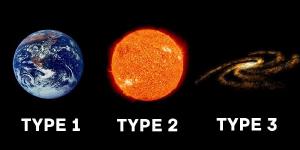Blog
Alien Glow
30 August 2014
 Yaabot
YaabotOne of the big questions about the universe is whether there is intelligent life “out there.” We know that life evolved here on Earth, so it seems possible that similar life could evolve on other worlds. Whether they would survive and evolve what we would consider intelligence is another matter. There have been some estimates made on just how likely this might be, such as through the Drake equation. There is a lot about these estimations that are purely speculative, but we do know that Earth-like planets (at least in terms of size and temperature) are likely very common. We also know the type of chemical elements life on Earth relies upon are common, and that life appeared on Earth relativity early in its history.
It would seem that life should be common in the cosmos. If our planet is a typical example, it would also seem that intelligence in the universe is fairly common. But this raises an interesting question as to where all these intelligent life forms are. It has taken only a few million years for humans to evolve from Australopithecus to astronaut, which is a mere moment of cosmological time. In another few million years humans could be walking among the galaxies. If a similar species is a few million years ahead of us, then why don’t we see evidence of them? This is sometimes referred to as the Fermi paradox, and there are lots of proposed solutions. One idea is that the evidence is there, we just haven’t noticed it yet. If these star-walking aliens haven’t taken an interest in us, evidence of their presence might be hard to spot. Recently, a paper in the Astrophysical Journal has proposed a way to detect powerful civilizations.1
The work is based upon an idea first proposed by astronomer Nikolai Kardashev in 1964. His idea was that as civilizations become more advanced, they require increasing amounts of energy. This means you can rank civilizations by their energy consumption, now known as the Kardashev scale. Type I are civilizations that harness the resources of their home planet, such as humans today. Type II harness almost the full energy of their home star, possibly through technology such as Dyson spheres. Species within the Star Trek universe would typically be Type II. Type III are civilizations that can harness the energy of an entire galaxy, such as the Asgard of the Stargate universe. Carl Sagan generalized the Kardashev scale to a general function of energy, rather than discrete steps, and showed that Earth is roughly at level 0.7.
Naturally all this is very speculative, but if advanced civilizations do use star-levels of energy they should emit an infrared signature of waste heat, which is where this new paper comes in. The authors looked at the infrared sky survey from WISE and compared it with modeled infrared signatures of advanced civilizations. The one thing they assumed is that the civilizations are emitting waste heat through physics as we currently understand it. What they showed is that WISE data excludes any clear presence of type III civilizations within our corner of the galaxy. So either there aren’t any Asgard-type aliens in our neighborhood, or they’ve learned to cover up their heat signatures.
It’s important to keep in mind that this work still makes a number of assumptions about alien life, and we currently have no evidence of life elsewhere in the universe. But what’s interesting about this kind of research is that it shifts a science-fiction idea out of the realm of pure speculation and toward the realm of real observation. We are reaching a point where claims about alien life can be tested scientifically, which is kind of cool.
Wright, J. T., et al. “The Ĝ infrared search for extraterrestrial civilizations with large energy supplies. II. Framework, strategy, and first result.” The Astrophysical Journal 792.1 (2014): 27. ↩︎